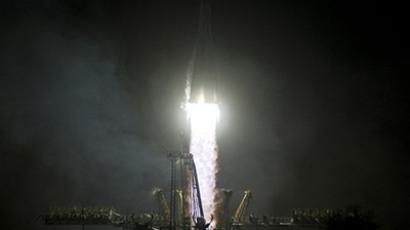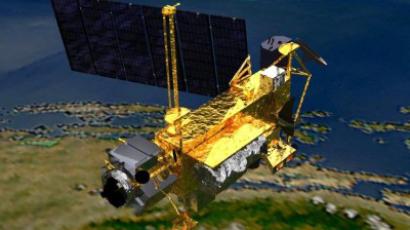Watch out for that satellite!
A de-commissioned NASA satellite is on its way back to Earth after decades of service. However scientists will only have an idea of its potential drop zone just a couple of hours before impact.
NASA's upper atmosphere research satellite, or UARS, weighs almost 6,000 kilograms and has been monitoring the makeup of our atmosphere for nearly two decades and the best estimates suggest that on Friday it is set to return home with a bump.Most of the satellite, which is the size of a bus, will burn up in the Earth’s atmosphere. However, as many as 26 chunks of the stricken research vehicle are expected to strike the Earth.Seventy per cent of the planet is covered with water, so the danger to us is fairly limited. NASA has announced a potential strike zone covering most of the globe, but where it will actually come down is really anyone’s guess.What is known for sure that is that it all will not fall in one place, debris is expected to be spread over 800 kilometers.However, this is not the only piece of space junk that is ready to come down: there are now over 20,000 sizable objects being tracked in Earth’s orbit. The problem is that, due to a process called the Kessler Effect, that number is growing exponentially.
The Kessler Effect, proposed by NASA scientist Donald J. Kessler in 1978, is a scenario in which the density of objects in low Earth orbit is high enough that collisions between objects could cause a cascade – each collision generating debris which increases the likelihood of further collisions. If it continues at the same rate, 200 years from now we will not be able to get anything into Earth’s orbit, as there will simply be no room.
Looking up at the sky from Earth it is hard to imagine the problems posed by space debris. It is only when we look through powerful telescopes that the true situation comes into focus.The job of monitoring all the junk in orbit is an important one, not just for the future, but for those currently in space on board the ISS.The ISS has to take evasive action over 600 times a year to get out of the way of debris, but if that is not possible, there is only one course of action left.The crew takes shelter in the most protected area of the ship. The safest place is the capsule in the Soyuz module, which is where the entire crew takes cover when the station is considered to be dangerous. With no viable way of giving space a spring clean, we have to rely on the atmosphere to burn up most falling debris. However in large cases like that of the UARS, the experts get a little concerned.When a used rocket enters the atmosphere, people can calculate when and where it is going to fall, but it is impossible to predict where the pieces of a satellite that has broken apart are going to end up.However we should not be too worried about a chunk of satellite landing in our back yard. Nevertheless should that happen NASA are warning against taking pieces as a souvenir. Not because it is toxic, just that it is US government property and they want it back.But Leonid Ivashov, from the Academy of Geopolitical Problems, warns that keeping pieces of the satellite would be, first of all, hazardous: plutonium, which does not burn in the atmosphere, poses a direct danger to human health. “Experts call this type of satellite an orbital trolleybus. You need a lot of energy to keep such a satellite operational. And Americans have used radioactive plutonium for this. Metal and other parts of the satellite will burn in the atmosphere, but plutonium won't and it will end up on earth,” the expert told RT. “And it's a deadly danger to humans, for instance, exposure to plutonium leads to cancer.” Still, the UARS cost $740 million, and if you fancy making some of that cash back for yourself, online bookies have been taking bets on whether it will hit the Pacific or Atlantic Ocean.














